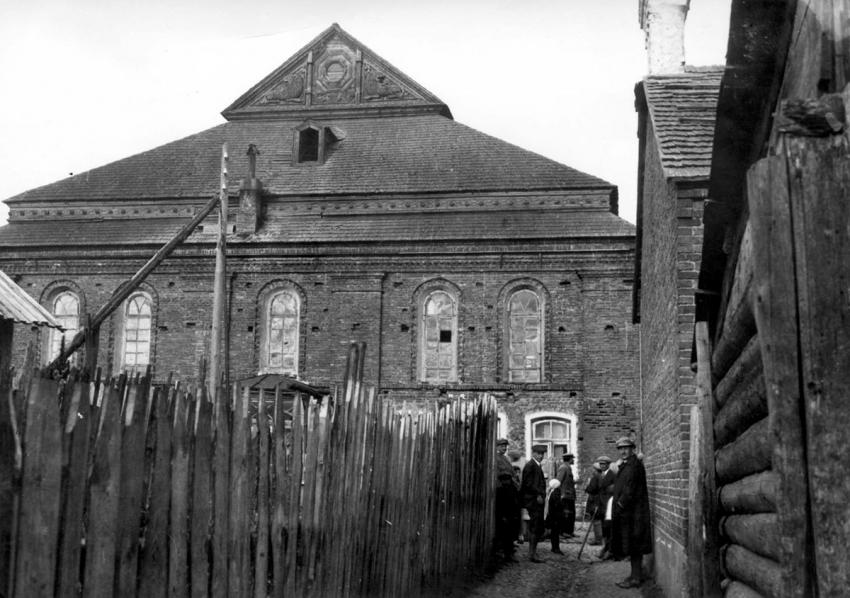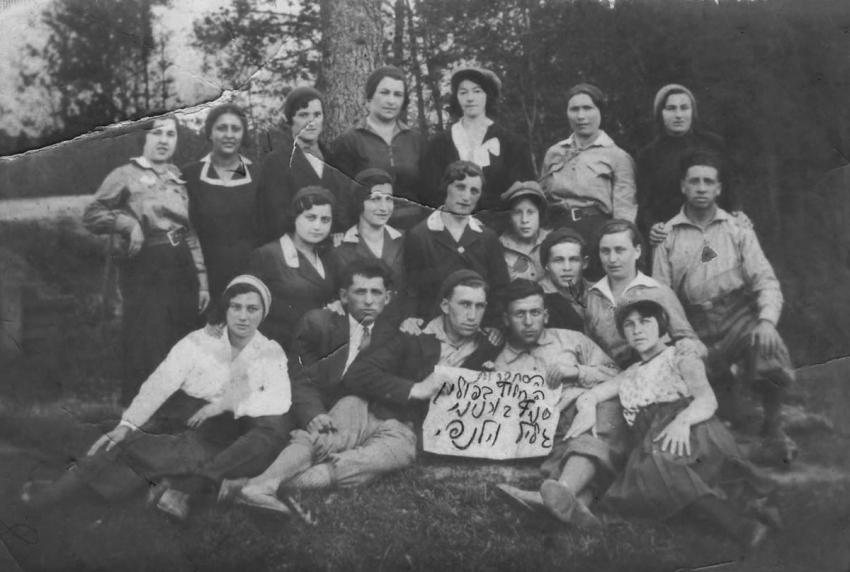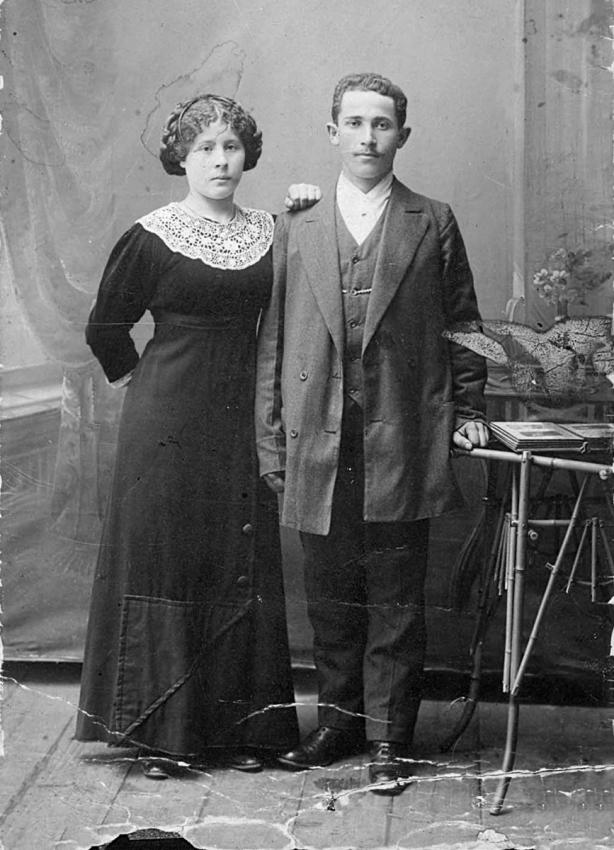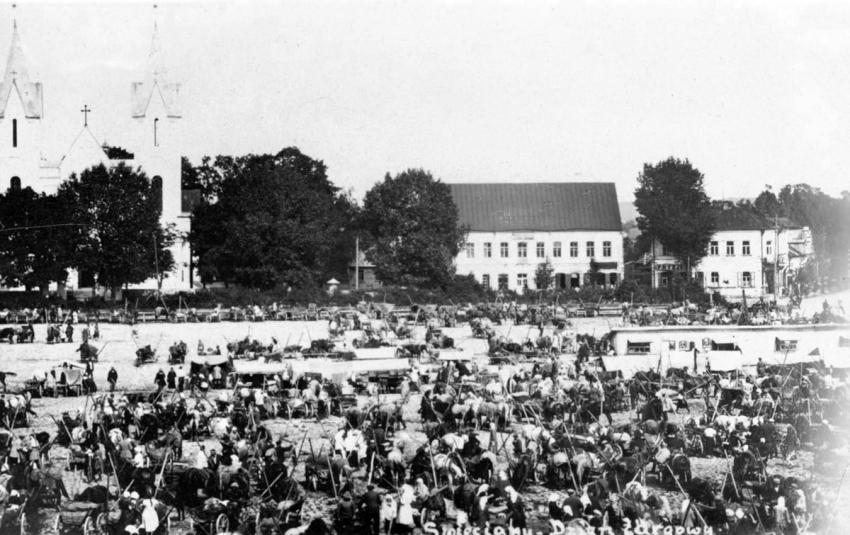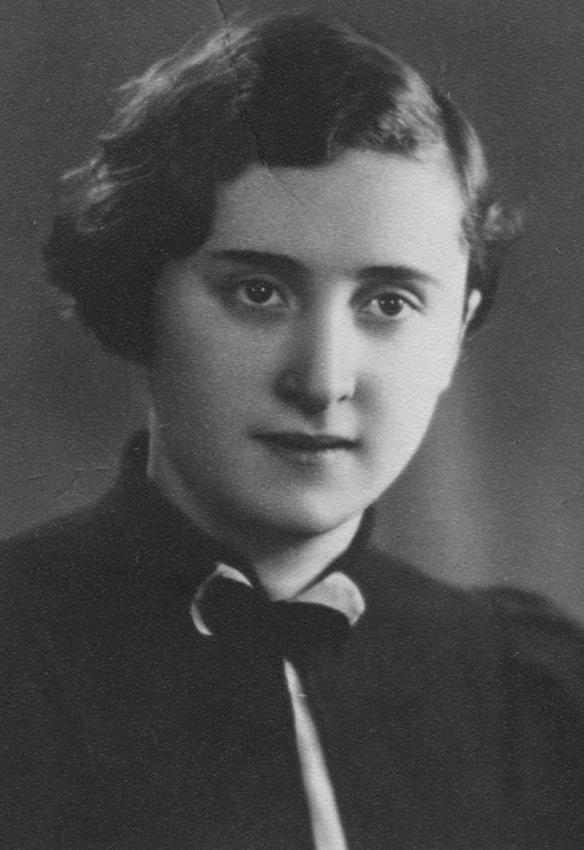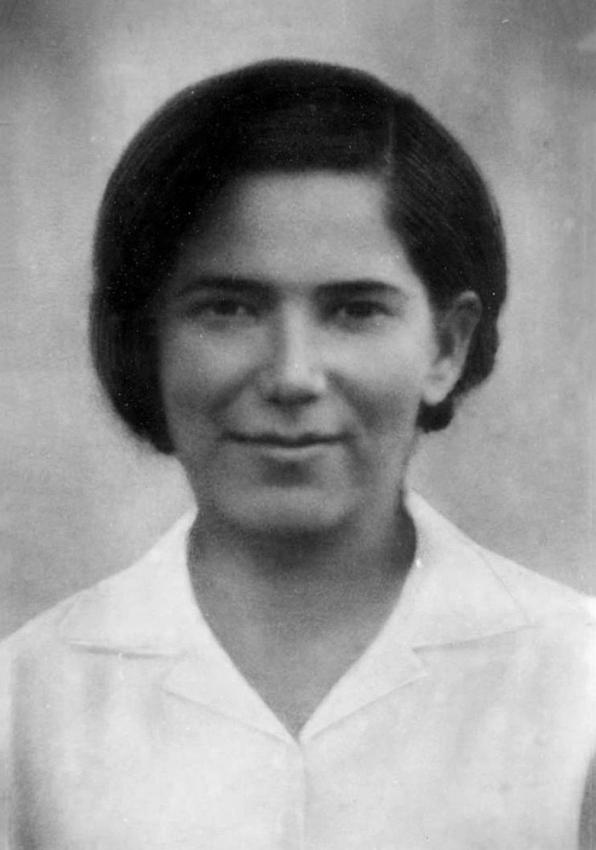In the winter of 1942/1943, the Germans made the decision to render the 50 km strip of land along the Lithuania-Belarus border "Judenrein", suspecting Jews in the ghettos there of cooperating with the partisans. In March, the Germans announced their intention to liquidate these ghettos and to transfer some of the inhabitants to the larger ghettos in Vilna and Kovno and others to labor camps. In the course of the month of March, some 1,250 Jews were brought to the Vilna ghetto from the Oszmiana, Święciany and Michaliszki ghettos. Another 1,450 Jews from Oszmiana were deported to labor camps. The remainder, some 5,000 Jews, were told that they were being sent to the Kovno ghetto.
These Jews were loaded onto two trains in the towns of Soły and Novo-Święciany. A few days earlier, the Germans had made an announcement in the Vilna ghetto, to the effect that relatives of Jews in Kovno could join the train passing through Vilna on its way to Kovno. Some 350 people were brought from the Vilna ghetto to the train station and herded onto cars that would be attached to the train headed for Kovno. Almost all these Jews asked to be transferred to the Kovno ghetto in order to be reunited with their families. Head of the Vilna ghetto Jacob Gens and several members of the Jewish Order Police also went on board the train.
The train from Soły departed on the night between 4-5 April. Following its departure, it became clear that it was bound for Ponary. At Ponary station Gens and the Jewish Order Policemen were returned to Vilna by Lithuanian police, who passed them over to the SiPo (security police). At first light, the Jews saw through the cracks that they had arrived at Ponary. When the doors were opened they were taken to the pits and shot. Hundreds tried to flee but most were shot at the train station and only a few succeeded in escaping.
The Jews from Novo-Święciany who reached Vilna on the morning of 5 April met a similar fate. Five cars were disconnected from the train and sent to the Bezdany labor camp. Two cars carrying Judenrat members from Święciany and other ghettos were also disconnected and they remained in Vilna. The rest of the train continued on to Ponary. When the people understood where they had been taken they broke out of the cars and began to run. Some resisted and attacked the Germans and Lithuanians who surrounded them, with weapons and their bare fists. The Germans and Lithuanians shot into the crowd; some 600 Jews were murdered at the train station and in the nearby fields.
Approximately 3,800 Jews brought by train from Soły and Novo-Święciany were murdered that day in Ponary. Several dozen escapees succeeded in reaching Vilna. The SiPo became aware of this and demanded they be turned over to them, but the order was cancelled by the Germans in order not to arouse the suspicions of the Jews of the ghetto. Gens was promised that the Vilna ghetto was not in any danger.
The next day, members of the Jewish Order Police were brought from Vilna to bury the corpses. This was the first time that the Germans had permitted Jews from the ghetto to see the Ponary murder site. Nine wagons arrived at the ghetto from Ponary, loaded with food and victims' belongings, triggering a bitter argument amongst the ghetto inhabitants. Some objected to taking the blood-spattered possessions of their brethren, while others were in favor, reasoning that it would help the ghetto population to survive. This untenable situation brought the Jews to new depths of despair.
Less than six months later, in September 1943, the Vilna ghetto was liquidated, and its Jews were deported to labor and extermination camps.
